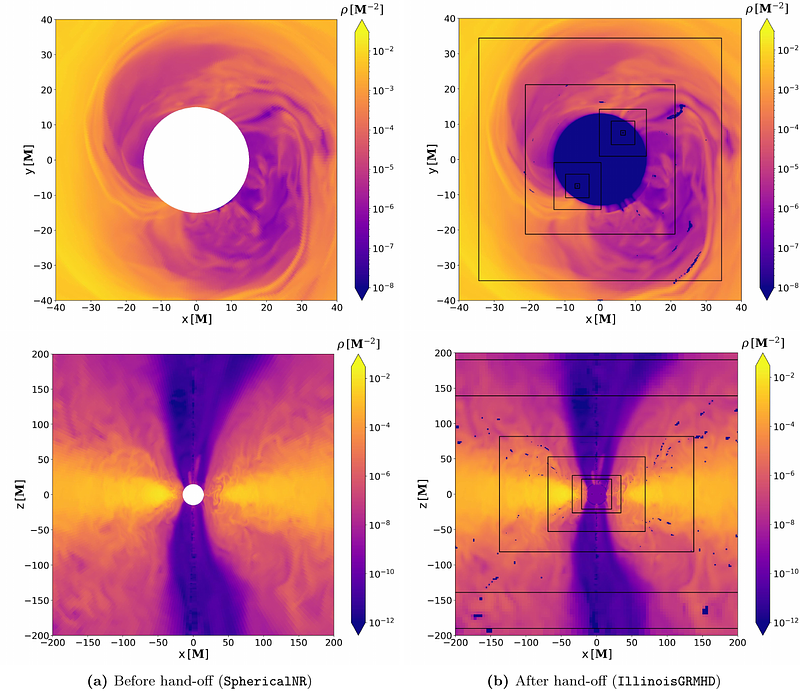Relativistic Gas Accretion onto Supermassive Black Hole Binaries from Inspiral through Merger

Relativistic Gas Accretion onto Supermassive Black Hole Binaries from Inspiral through Merger
Lorenzo Ennoggi, Manuela Campanelli, Yosef Zlochower, Scott C. Noble, Julian Krolik, Federico Cattorini, Jay V. Kalinani, Vassilios Mewes, Michail Chabanov, Liwei Ji, Maria Chiara de Simone
AbstractAccreting supermassive black hole binaries are powerful multimessenger sources emitting both gravitational and electromagnetic (EM) radiation. Understanding the accretion dynamics of these systems and predicting their distinctive EM signals is crucial to informing and guiding upcoming efforts aimed at detecting gravitational waves produced by these binaries. To this end, accurate numerical modeling is required to describe both the spacetime and the magnetized gas around the black holes. In this paper, we present two key advances in this field of research. First, we have developed a novel 3D general relativistic magnetohydrodynamics (GRMHD) framework that combines multiple numerical codes to simulate the inspiral and merger of supermassive black hole binaries starting from realistic initial data and running all the way through merger. Throughout the evolution, we adopt a simple but functional prescription to account for gas cooling through the emission of photons. Next, we have applied our new computational method to follow the time evolution of a circular, equal-mass, non-spinning black hole binary for ${\sim\!200}$ orbits starting from a separation of ${20\,r_g}$ and reaching the post-merger evolutionary stage of the system. We have identified how and when the minidisks dissolve as the binary compresses. We also show that even when the binary ``decouples'' from its surrounding disk, its luminosity decreases by only a factor of a few and abruptly increases by ${\sim\!50\%}$ at the time of merger, accompanied by an equally abrupt change in spectrum. Finally, the magnetic flux brought to the spin-parameter ${\sim\!0.68}$ merger remnant is able to drive a relativistic, Poynting-flux-dominated jet.